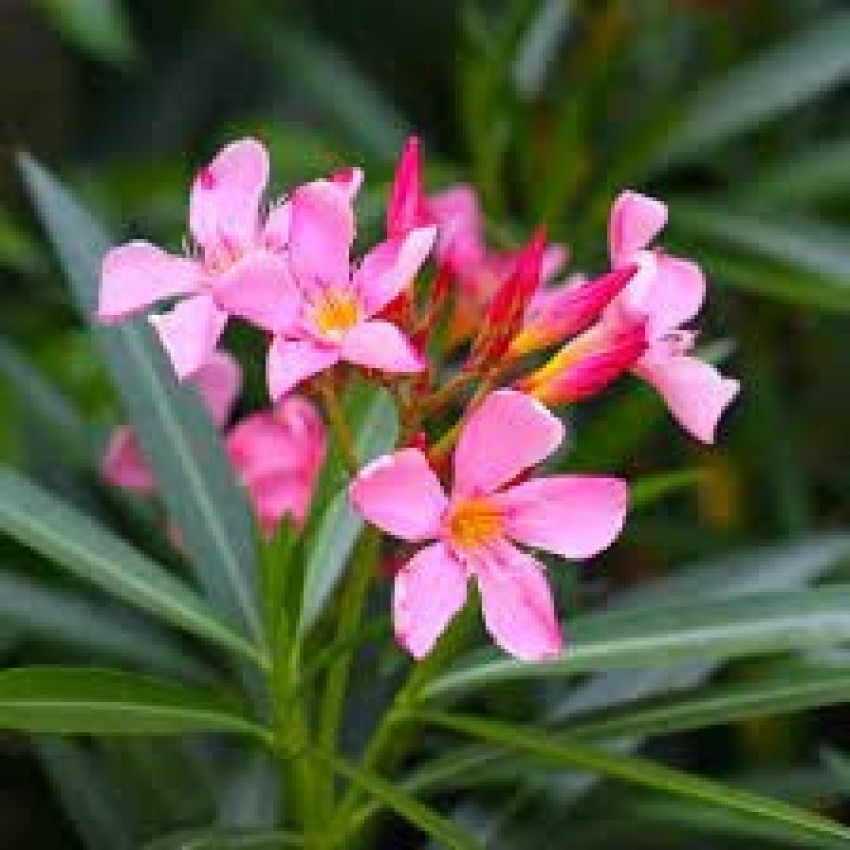
Introduction:
Nerium oleander in sydeney, commonly known as oleander, is a striking and versatile shrub that has captivated garden enthusiasts and landscapers for centuries. Native to the Mediterranean region, Southwest Asia, and Southeast Asia, this evergreen plant is admired for its vibrant, funnel-shaped flowers and glossy, lance-shaped leaves. However, despite its aesthetic appeal, it is essential to acknowledge that oleander harbors a dark side – it is highly toxic, containing potent compounds that can be harmful or even fatal if ingested.
Botanical Features:
Nerium oleander belongs to the Apocynaceae family and is characterized by its dense, rounded form, reaching heights of 6 to 12 feet. The lance-shaped leaves are leathery and dark green, providing a lush backdrop for the showy clusters of flowers. Oleander blooms in a variety of colors, including shades of white, pink, red, and purple. The flowers, which appear from late spring to early fall, are known for their sweet fragrance and are often used in ornamental arrangements.
Toxicity Concerns:
While oleander's blossoms and foliage add a touch of elegance to gardens and landscapes, it is crucial to approach this plant with caution due to its toxic nature. Nerium oleander contains a group of toxic compounds, including oleandrin, nerioside, and oleandrigenin. These chemicals affect the heart, causing symptoms such as nausea, vomiting, abdominal pain, heart irregularities, and, in severe cases, death. The plant's toxicity extends to all of its parts, making it hazardous to handle without proper precautions.
Historical and Cultural Significance:
Throughout history, oleander has held symbolic and cultural significance in various civilizations. In ancient times, it was associated with the goddess Aphrodite in Greek mythology and was believed to bring good luck. In the Victorian language of flowers, oleander symbolized caution or beware. Despite its toxic properties, oleander has been utilized in traditional medicine for its potential therapeutic effects, particularly in the treatment of cardiac conditions. However, the risks associated with its toxicity outweigh any potential benefits, leading to caution in its use.
Landscaping and Ornamental Uses:
Despite the dangers associated with oleander, its aesthetic appeal has made it a popular choice in landscaping. The plant's tolerance to drought, salt, and various soil conditions makes it suitable for a range of environments. Oleander is often used as a hedge, screen, or as a standalone ornamental shrub. Regular pruning helps maintain its shape and encourages a fuller bloom of flowers.
Safety Measures:
For those who choose to include oleander in their landscape, it is crucial to take proper safety precautions. Planting it away from areas frequented by children and pets reduces the risk of accidental ingestion. Wearing protective gear, such as gloves, when handling oleander is also advisable. Additionally, educating oneself about the plant's toxic properties and promptly seeking medical attention in case of accidental ingestion is vital.
Conclusion:
Nerium oleander is undeniably a visually stunning plant, but its allure comes with a caveat – its inherent toxicity. Gardeners, landscapers, and enthusiasts should approach oleander with caution, recognizing its potential dangers and taking appropriate safety measures. While its historical and cultural significance cannot be ignored, a responsible approach ensures that the beauty of oleander can be appreciated without compromising the safety of those who interact with it.




